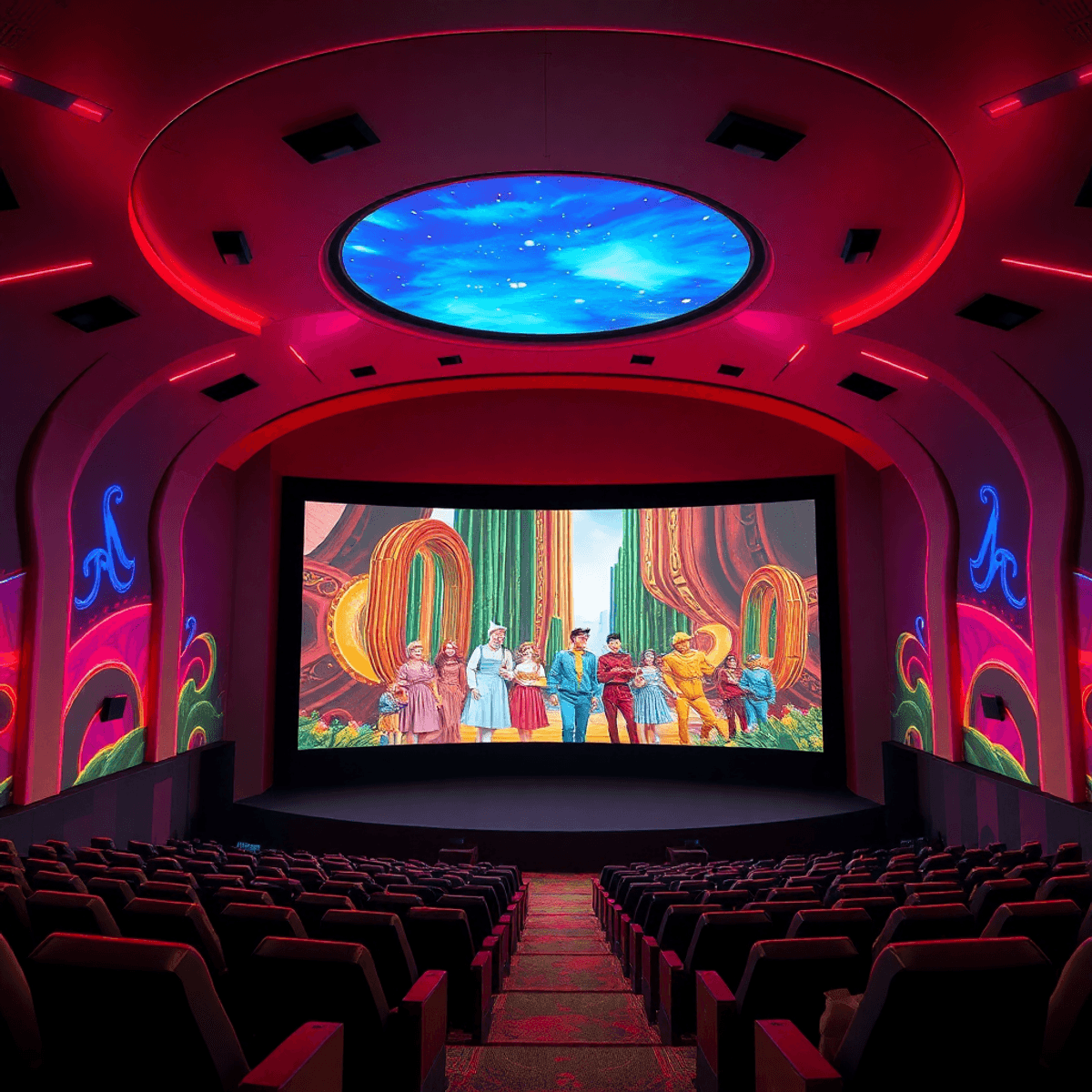
The Wizard of Oz is a classic movie that has captivated audiences for generations with its timeless story and enchanting visuals. As this beloved film is reimagined using generative AI at the Sphere venue, we explore what makes it so special.
This article will examine the intersection of art and technology, exploring whether the use of AI in enhancing this cherished film ultimately enhances or diminishes its original charm.
Film technology has undergone significant evolution over the years, shaping the way audiences experience movies. From the early days of silent films to the introduction of color, sound, and special effects, each technological advancement has revolutionized how stories are told on screen. Innovations like CGI (Computer-Generated Imagery), motion capture, and 3D have pushed boundaries in visual storytelling, offering viewers immersive and captivating experiences.
The emergence of various viewing platforms has transformed how audiences engage with films. The shift from traditional cinemas to home theaters, streaming services, and now immersive venues like the Sphere has diversified the ways people consume content. Each platform offers unique benefits, whether it’s the communal experience of a movie theater, the convenience of streaming at home, or the unparalleled visual spectacle provided by cutting-edge technologies like generative AI enhancements.
A prime example of this evolution is seen in immersive viewing experiences which blend film technology with new viewing platforms to create a unique spectator experience.
By exploring the historical trajectory of film technology and examining the impact of different viewing platforms on audience engagement, we gain insight into how these factors have influenced storytelling techniques and cinematic experiences. The interplay between advancements in film technology and evolving viewing platforms continues to shape the landscape of filmmaking, opening up new possibilities for enhancing storytelling and redefining the boundaries of visual entertainment.
Generative AI technology is changing the way classic films are restored. Instead of relying on manual retouching or computer-generated imagery (CGI), generative AI uses deep learning models trained on large datasets to intelligently recreate and enhance visual and audio elements.
For a film like The Wizard of Oz, originally shot on 35mm Technicolor with limited resolution and a 4:3 aspect ratio, this means not just cleaning up grain or scratches but fundamentally expanding the visual canvas for modern immersive displays.
The restoration process for the Sphere’s impressive 16K presentation involved several important steps:
This approach allows The Wizard of Oz to be experienced as never before—visually expansive without losing its core identity. The combination of AI technology with film restoration creates a unique blend of preservation and innovation that redefines what “classic” can mean in today’s high-tech cinematic world.
Fans have expressed a mix of reactions to the AI-modified version of The Wizard of Oz, even without seeing it yet.
The use of AI manipulation in cinema raises profound ethical dilemmas regarding artistic integrity and authenticity.
Within this context, the question arises: Is The Wizard of Oz with generative AI still truly The Wizard of Oz, or does it morph into a modern interpretation that blurs the lines between preservation and innovation? Warner Brothers’ Secret Cinema, project at Cosm sidesteps this by keeping the original form and adding immersive elements elsewhere on the dome screen.
The introduction of generative AI modifications to classic films like The Wizard of Oz opens up new possibilities for enhancing the viewing experience. By revitalizing visuals and audio quality through advanced technologies, these enhanced versions have the potential to captivate audiences in novel ways.
While AI enhancements can breathe new life into beloved films, there are concerns about altering the original artistic intent and disrupting the cultural legacy of iconic works. Preserving the authenticity and historical context of cinema classics is vital for understanding the evolution of filmmaking over time.
Introducing AI-modified versions to new generations raises questions about how these adaptations shape perceptions of cinematic masterpieces. Balancing innovation with respect for cinematic heritage is crucial in navigating the evolving landscape of film preservation and audience interpretation.
Balancing Tradition and Innovation: Striking a delicate equilibrium between honoring the original artistic vision of classic films and leveraging technological advancements like generative AI for restoration is crucial.
Preserving Timelessness in Cinema: The debate surrounding AI modifications to films like The Wizard of Oz raises fundamental questions about preserving the timeless essence of cinematic masterpieces.
Reflecting on “The Wizard of Oz” with Generative AI: As we ponder whether The Wizard of Oz remains true to itself after AI interventions, we confront the evolving landscape where tradition meets innovation in cinema.
By navigating the intricate interplay between tradition and innovation, can we ensure that cinematic classics retain their magic while embracing the possibilities of technological enhancement? In asking, “Is The Wizard of Oz with Generative AI Still The Wizard of Oz?”, we embark on a journey to define the future path of film restoration and preservation.

